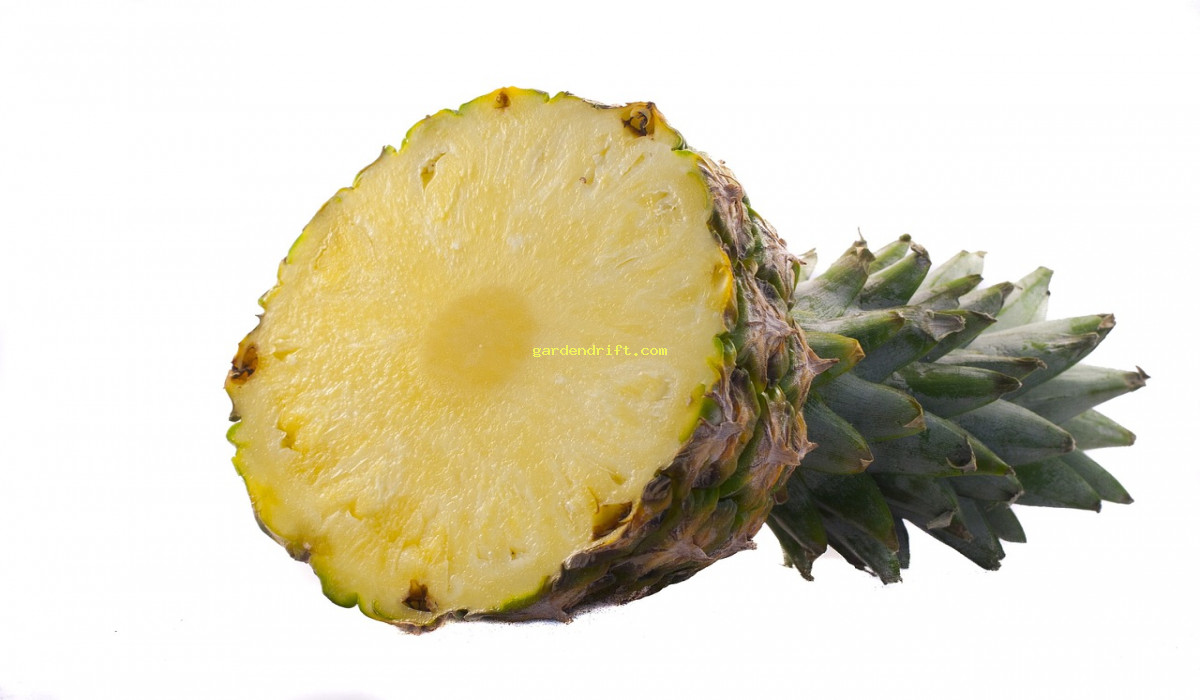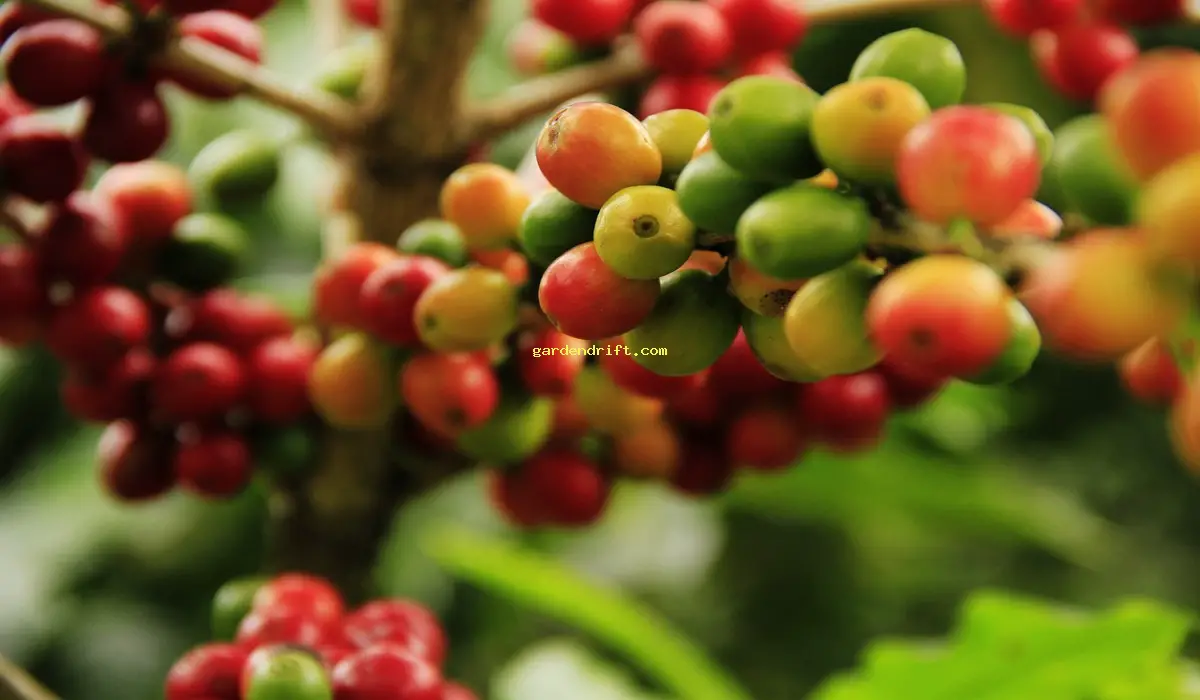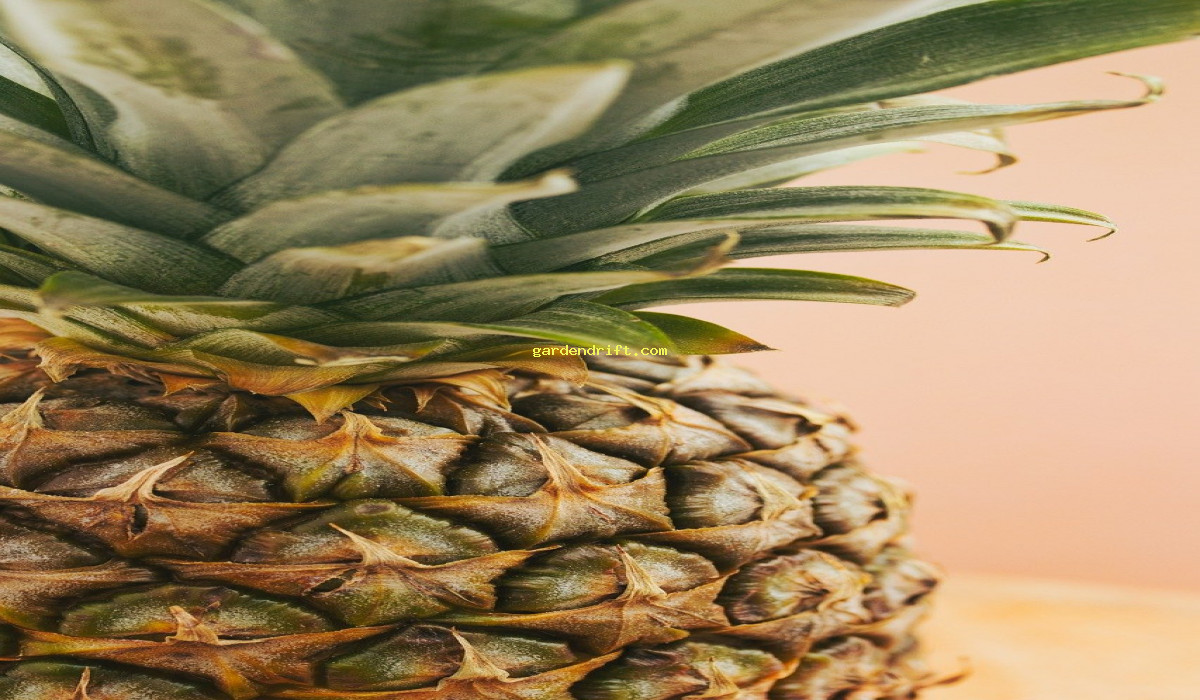5 Reasons Why a Pineapple House Plant is the Perfect Addition to Your Home Decor. A pineapple house plant is a delightful addition to any home, bringing a touch of tropical charm.
5 Reasons Why a Pineapple House Plant
With its distinctive spiky leaves and delectable fruits, this plant is easy to care for and adds a pop of color to any room. Learn how to incorporate this unique plant into your indoor space and enjoy its beauty for years to come. 5 Reasons Why a Pineapple House Plant is the Perfect Addition to Your Home Decor
Pineapple House Plant: A Tropical Delight in Your Home
Welcome to the world of pineapple house plants! These beautiful and exotic plants are a great addition to any home. Their vibrant leaves and sweet scent will transport you to a tropical paradise, even in the middle of winter. But there’s more to pineapple house plants than just their aesthetics. In this blog post, we will explore everything you need to know about these fascinating plants, from their origins to care tips and more.
The Fascinating History and Origins of Pineapple House Plants
Pineapples, or Ananas comosus, originated in South America and were first cultivated by the native tribes of the region. These delicious fruits were considered a symbol of hospitality and were often given as gifts to welcome guests. Europeans were introduced to pineapples in the 15th century when Christopher Columbus brought them back from his travels to the Caribbean.
The first pineapple house plants were grown in Europe in the 1700s, primarily in greenhouses and conservatories. However, it wasn’t until the 1800s that pineapples were successfully grown in home gardens as the understanding of their needs improved. Today, pineapple house plants can be found in homes all around the world, bringing a touch of the tropics into our daily lives.
Types of Pineapple House Plants
There are two main types of pineapple house plants: ornamental and fruiting. Ornamental pineapples, also known as Ananas comosus variegatus, are grown for their beautiful variegated leaves and do not produce fruit. On the other hand, fruiting pineapples produce edible fruit and are divided into two cultivars: “Smooth Cayenne” and “Queen.” While both varieties produce delicious pineapples, “Queen” is smaller and better suited for indoor growing.
Why You Should Add a Pineapple House Plant to Your Home
Pineapple house plants not only add a touch of tropical beauty to your home, but they also have many benefits that make them a great addition to any plant collection:
- Improves indoor air quality by removing toxins and producing oxygen
- Brings a pop of color and vibrancy to any room
- Low maintenance and easy to care for
- Can produce edible fruit if cared for properly
- Thrives in a variety of lighting conditions
With these benefits in mind, it’s no wonder that pineapple house plants have become increasingly popular in recent years.
How to Care for Your Pineapple House Plant
Now that you know the history and benefits of pineapple house plants, let’s dive into how to care for them. Follow these tips to ensure your plant thrives:
- Lighting: Pineapple plants thrive in bright, indirect light. Place them near a south-facing window for optimal growth.
- Temperature: These tropical plants prefer temperatures between 70-85°F.
- Watering: Water your plant once a week, making sure the soil is evenly moist but not waterlogged. You can also mist the leaves to increase humidity.
- Fertilizer: Use a balanced fertilizer once a month during the growing season.
- Repotting: Repot your pineapple plant every 2-3 years, using a well-draining potting mix.
With proper care, your pineapple house plant can grow up to 3 feet tall and produce fruit after 2-3 years.
Common Pests and Diseases That Affect Pineapple House Plants
Like any plant, pineapple house plants are susceptible to pests and diseases. Here are some common issues to watch out for:
- Aphids: These small insects feed on the sap of the leaves, causing them to wilt and turn yellow.
- Scale: These pests look like small brown or white bumps on the leaves and stems and can cause stunted growth and leaf yellowing.
- Fungal diseases: Pineapple plants are prone to rot caused by overwatering or poorly draining soil.
If you notice any signs of pests or diseases, take action immediately to prevent them from spreading to other plants. Use natural remedies such as neem oil or soap and water to combat pests, and adjust your watering habits to prevent fungal diseases.
Tips for Encouraging Your Pineapple House Plant to Produce Fruit
While ornamental pineapple plants do not produce fruit, you may be able to get your fruiting pineapple plant to produce delicious pineapples with the right care. Here are a few tips to encourage fruit production:
- Allow your plant to mature for 2-3 years before expecting fruit.
- Expose your plant to ethylene gas, which is naturally produced by ripening fruit, to speed up the fruiting process.
- Use a pot that is slightly smaller than the plant’s root system to encourage fruiting.
- Provide plenty of light and warmth for optimal growth.
- Hand pollinate the flowers of your plant to ensure successful fruit production.
Decorating with Pineapple House Plants
Pineapple house plants are not only beautiful but also versatile in their decorative uses. Here are a few ways you can incorporate these plants into your home decor:
- As a centerpiece for your dining table
- As a statement piece in your living room
- In a macrame hanger for a boho touch
- As a pop of color on your bookshelf
- In a decorative pot on your patio
The possibilities are endless, so get creative and have fun decorating with your pineapple house plant.
In Summary
Pineapple house plants are a beautiful and unique addition to any home. With their fascinating history, benefits, and tips for care and fruit production, you now have all the information you need to successfully grow and enjoy these tropical beauties. So go ahead and add a pineapple house plant to your plant collection and bring a touch of the tropics into your home.
5 Reasons Why a Pineapple House Plant is the Perfect Addition to Your Home Decor

5 Reasons Why a Pineapple House Plant is the Perfect Addition to Your Home Decor. easy to care 5 Reasons Why a Pineapple House Plant is the Perfect Addition to Your Home Decor
The Essential Guide to Growing a Pineapple House Plant
Growing tropical fruits and plants in the comfort of your own home is not only a fun and rewarding experience, but it also adds a touch of the exotic to your living space. One of the most popular tropical house plants is the pineapple plant. With its unique appearance and delicious fruit, the pineapple plant is a must-have for any plant enthusiast. Here’s everything you need to know about growing and caring for a pineapple house plant.
What is a Pineapple House Plant?
The pineapple house plant, also known as ananas comosus, is a tropical plant that belongs to the bromeliad family. It is an herbaceous perennial, which means it can thrive for several years and produce multiple fruits.
Choosing the Right Pineapple Plant
When choosing a pineapple plant to grow at home, it’s essential to select a healthy and disease-free plant. Make sure the plant has strong green leaves and no visible pests or diseases. The pineapple plant is most commonly available in two varieties: the smooth cayenne pineapple and the queen pineapple. The smooth cayenne has a taller and larger shape, while the queen has a more compact and round appearance.
Planting the Pineapple Plant
To successfully grow a pineapple plant, it’s essential to follow specific planting guidelines. Here’s a step-by-step guide to planting your pineapple plant:
1. Choose a pot with good drainage and fill it with well-draining potting mix.
2. Remove the bottom two to three leaves of your pineapple plant to expose the stem.
3. Plant the pineapple plant in the pot, making sure the stem is securely covered with soil.
4. Water the plant thoroughly.
5. Place the pot in a warm and sunny spot, preferably near a window.
6. Maintain a consistent temperature of 60-75°F (15-24°C) for optimal growth.
Watering and Fertilizing
The pineapple plant does not require frequent watering and is relatively drought-tolerant. Water the plant once a week, ensuring that the soil is moist but not soggy. Overwatering can cause root rot, which can be fatal for the plant. Fertilize the plant once a month with a balanced liquid fertilizer to provide essential nutrients for healthy growth.
Pineapple Plant Care
The pineapple plant requires a few essential care tips to thrive and produce fruit. Here are some care guidelines to follow:
1. Provide proper drainage and make sure the plant is not sitting in water.
2. Keep the plant in a warm and humid environment.
3. Avoid exposing the plant to direct sunlight for extended periods.
4. Rotate the pot once a week to ensure even growth.
5. Remove any dead or dying leaves to prevent diseases.
6. Use a humidifier or mist the plant occasionally to increase humidity levels.
Harvesting Pineapples
With proper care and maintenance, your pineapple plant will start producing fruit within 18-24 months. The pineapple fruit will start to change color from green to yellow when it’s ripe. You can gently twist or cut the fruit from the stem when it’s fully ripe.
Troubleshooting Common Issues
Even with proper care, the pineapple plant can face a few common issues. Here are some troubleshooting tips to help you tackle these problems:
1. Yellowing leaves: This can be a sign of overwatering. Make sure to water the plant less frequently and improve drainage.
2. Browning leaves: This can be caused by inconsistent watering. Make sure to maintain a consistent watering schedule.
3. Pests: The most common pests that can infest pineapple plants are mealybugs and scale insects. Use a natural pesticide to get rid of them.
4. No fruit: If your pineapple plant is not producing fruit, it may be due to insufficient sunlight. Move the plant to a sunnier spot to encourage fruit production.
LSI Keywords for Pineapple House Plant
– Tropical fruit plants
– Growing exotic plants
– Bromeliad family
– Pineapple plant varieties
– Planting guidelines
– Drought-tolerant plants
– Fertilizing house plants
– Maintaining humidity levels
– Ripe pineapple fruit
– Preventing plant diseases
The Benefits of Growing a Pineapple House Plant
Aside from the unique aesthetics it adds to your home, growing a pineapple plant also has several benefits. Here are some reasons why you should consider adding a pineapple plant to your indoor plant collection:
– Adds a tropical touch to your living space
– Produces delicious and unique fruit
– Low-maintenance plant
– Improves air quality by releasing oxygen
– Enhances mood and reduces stress levels
Spicing Up Your Pineapple Plant Game
If you’re feeling extra adventurous with your pineapple plant, here are some fun and quirky ways to jazz it up:
– Paint the pot in vibrant tropical colors
– Place a pineapple-shaped candle in the pot
– Decorate the pot with colorful pineapples stickers
– Add a pineapple-patterned fabric as a wrap for the pot
– Hang pineapple-shaped lights around the plant
The Wrap Up
Growing a pineapple house plant is an exciting and rewarding experience. With proper care and maintenance, you can enjoy fresh pineapples straight from your home. Make sure to follow the planting and care guidelines to ensure your plant stays healthy and produces abundant fruit. And don’t forget to get creative with your pineapple plant decor to make it a standout piece in your home. Happy planting! 5 Reasons Why a Pineapple House Plant is the Perfect Addition to Your Home Decor.

A pineapple house plant is a delightful addition to any home, bringing a touch of tropical charm. With its distinctive spiky leaves and delectable fruits, this plant is easy to care for and adds a pop of color to any room. Learn how to incorporate this unique plant into your indoor space and enjoy its beauty for years to come.. Pineapple 5 Reasons Why a Pineapple House Plant is the Perfect Addition to Your Home Decor
Is the pineapple house plant easy to care for?
Yes, the pineapple house plant is very easy to care for. It requires minimal maintenance and can thrive in a variety of environments.
How often should I water my pineapple house plant?
Pineapple house plants should be watered once a week, allowing the soil to dry out slightly between watering. Over-watering can cause root rot.
Does the pineapple house plant produce fruit?
Yes, the pineapple house plant can produce fruit if it receives enough light and proper care. However, it may take several years before it produces fruit.
Can I grow a pineapple house plant from the top of a pineapple fruit?
Yes, you can grow a pineapple house plant from the top of a pineapple fruit. Simply cut off the top of the fruit and place it in soil to root.
How much light does a pineapple house plant need?
Pineapple house plants require bright, indirect light in order to thrive. Placing them near a south-facing window is ideal.
Should I use fertilizer for my pineapple house plant?
Using a fertilizer specifically made for tropical plants can help promote growth and fruit production in your pineapple house plant. Follow the instructions on the fertilizer carefully.
Can I grow multiple pineapple house plants in one pot?
Yes, you can grow multiple pineapple house plants in one pot. However, make sure the pot is large enough to accommodate their growth and provide adequate drainage.
Do pineapple house plants attract pests?
Pineapple house plants are not known to attract pests, but they can still fall victim to common house plant pests such as mealybugs or spider mites. Regularly inspecting and cleaning your plant can help prevent infestations.
How often should I repot my pineapple house plant?
Pineapple house plants should be repotted every 1-2 years to provide fresh soil and room for growth. Choose a pot that is only slightly larger than the current one and use a well-draining potting mix.
Can I grow a pineapple house plant outdoors?
Pineapple house plants can be grown outdoors in warmer climates, but they may need to be brought indoors during colder months. They should be placed in an area with bright, indirect light and protected from strong winds.
What temperature range does the pineapple house plant prefer?
Pineapple house plants prefer temperatures between 65-75 degrees Fahrenheit. They can tolerate slightly higher or lower temperatures, but may not thrive as well.
Do I need to prune my pineapple house plant?
Pruning is not necessary for a pineapple house plant, but it can help promote a more compact and healthy plant. Prune off any dead or damaged leaves with clean scissors.
Can I propagate my pineapple house plant?
Yes, you can propagate your pineapple house plant by removing and replanting the offshoots, or “pups”, that grow at the base of the plant. Make sure the offshoots have developed a strong root system before replanting.
Are pineapple house plants toxic to pets?
Pineapple house plants are not known to be toxic to cats or dogs, but it is always best to keep any plant out of reach of pets to prevent accidental ingestion.
What should I do if my pineapple house plant is not growing?
If your pineapple house plant is not growing, it could be due to insufficient light or lack of nutrients. Try moving it to a brighter area and fertilizing it to see if that helps stimulate growth. If not, there may be an underlying issue such as root rot or pests that need to be addressed. 5 Reasons Why a Pineapple House Plant is the Perfect Addition to Your Home Decor
